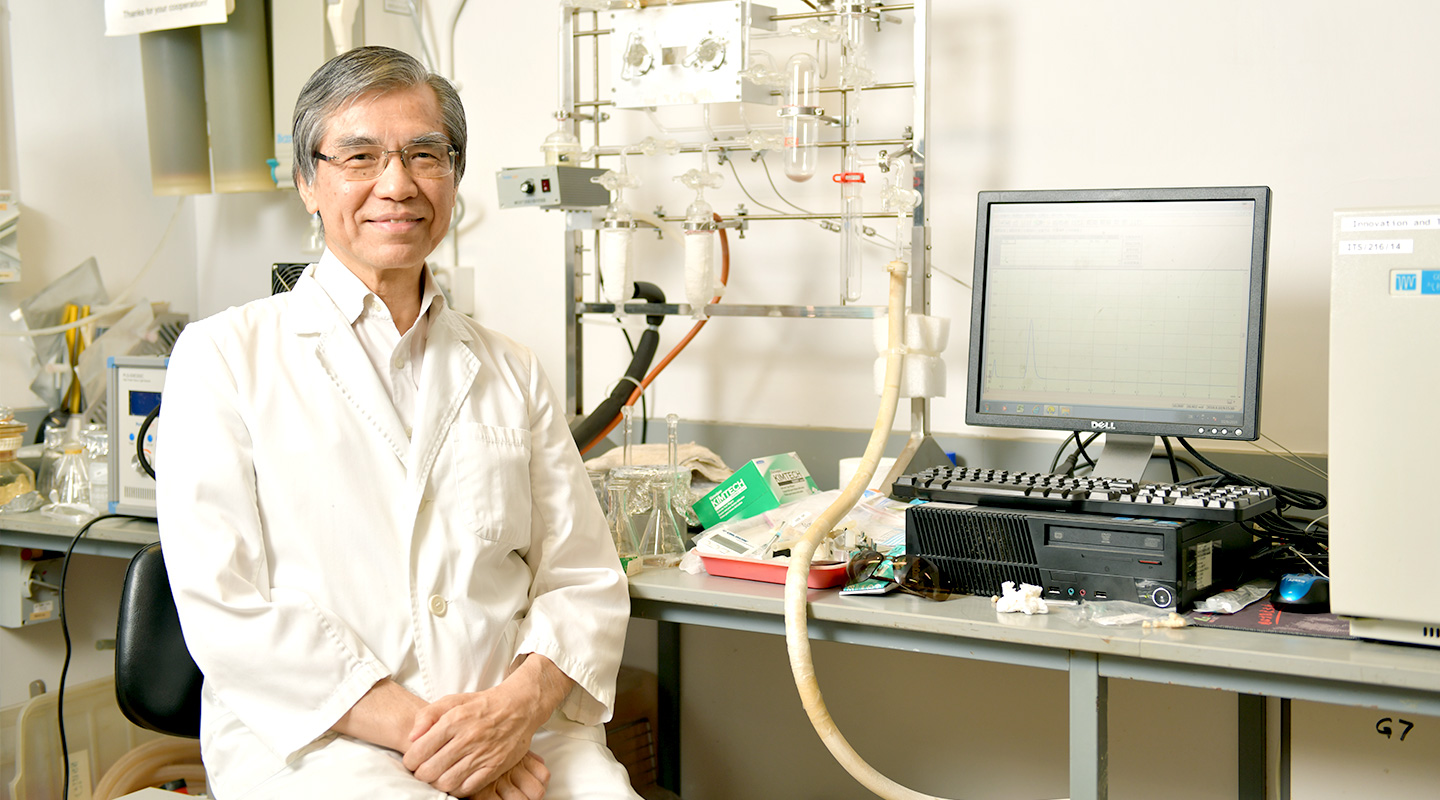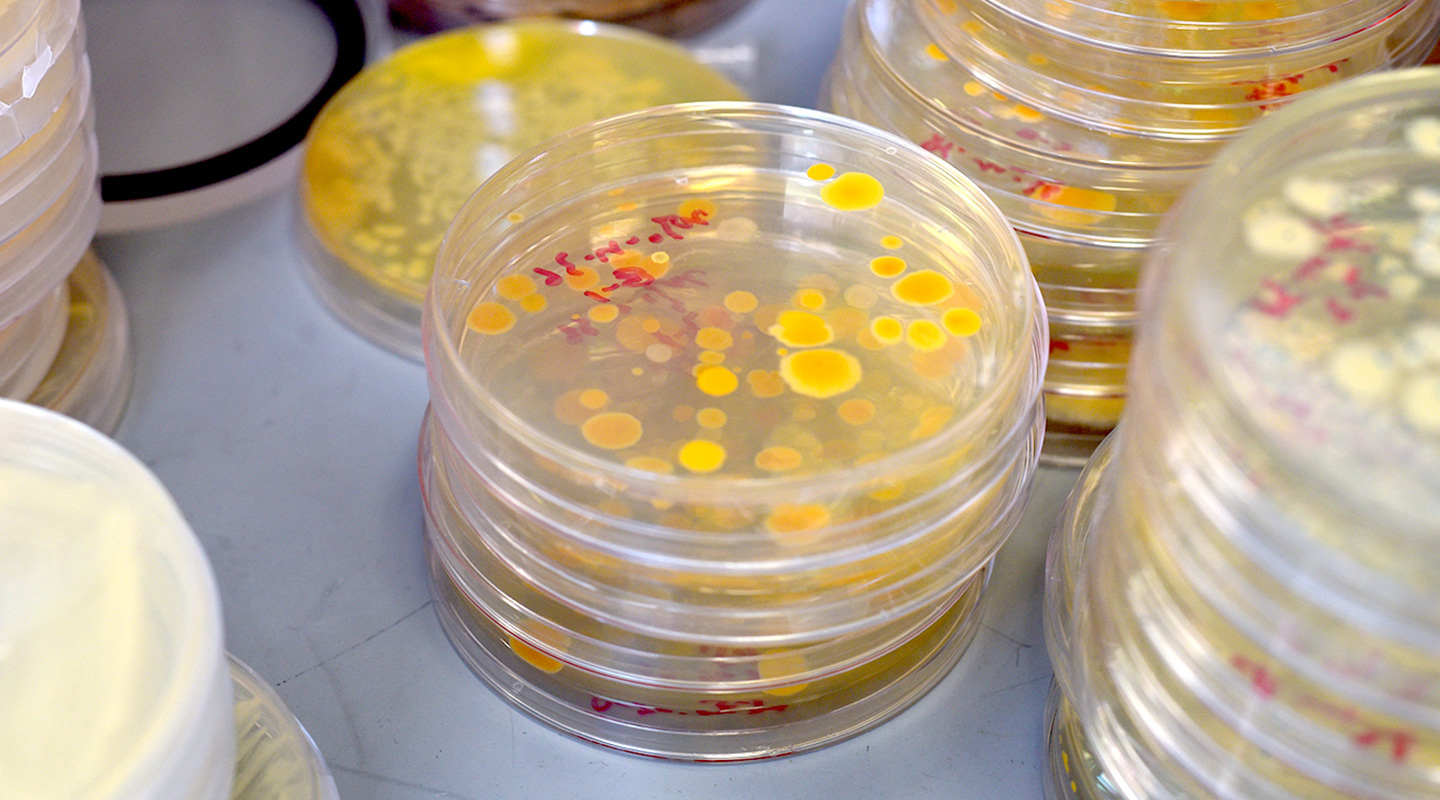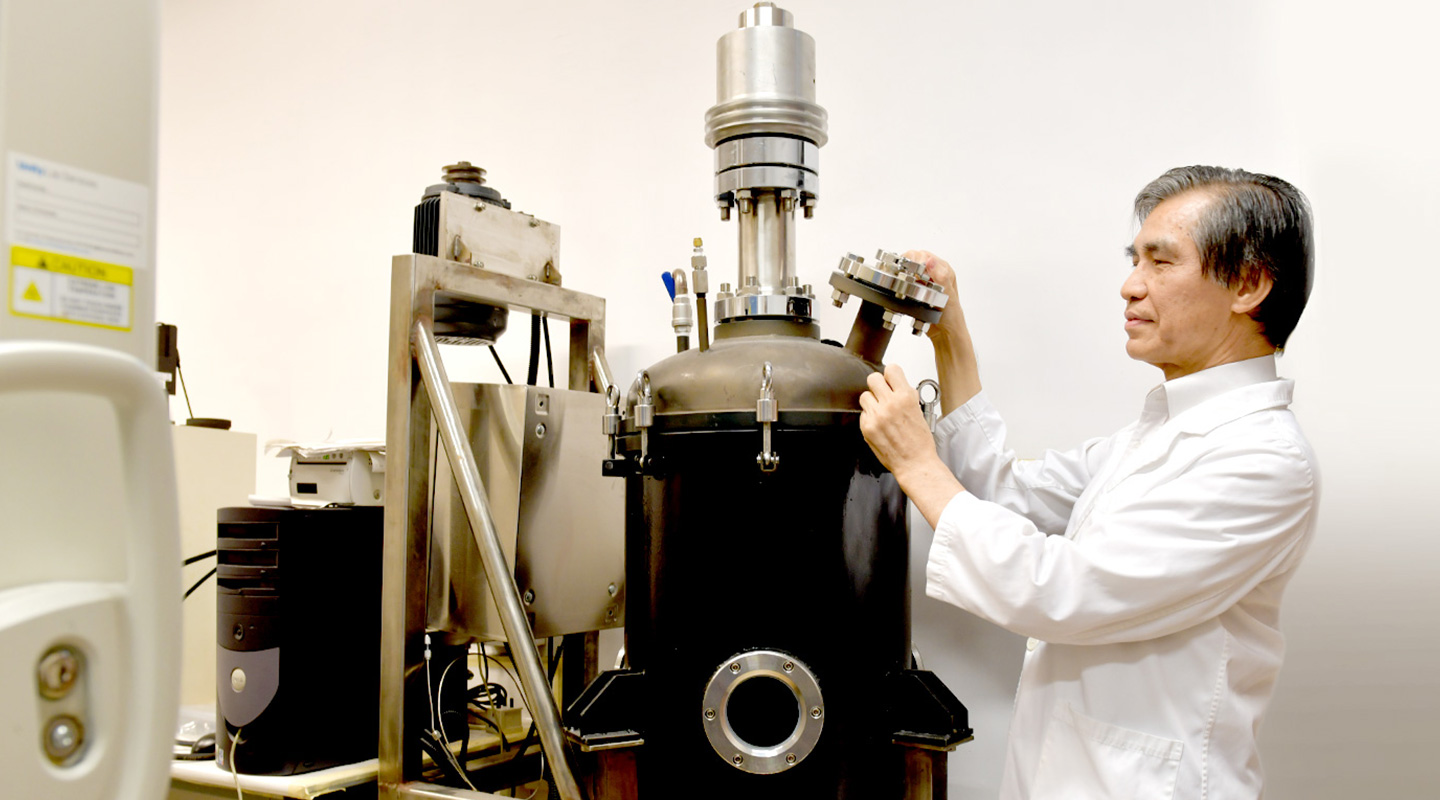Dear readers, With the launch of e-newsletter CUHK in Focus, CUHKUPDates has retired and this site will no longer be updated. To stay abreast of the University’s latest news, please go to https://focus.cuhk.edu.hk. Thank you.
A Magnetic Solution
Wong Po-keung on a quest to purify contaminated water

Would you drink waste water? Thanks to the work of microbiologist Wong Po-keung, such an advance would be possible, by treating outflow with natural but magnetic materials to kill bacteria and remove impurities.
It’s been a two-decade quest to find the right ‘cure’ for polluted water. What started as an interest in bioremediation, to help the natural environment recover, has become a specialization in treating contaminated water in all its forms, whether industrial runoff, sewerage, food-services waste or plain old rainwater.
The challenges are many. China has plenty of pollutants such as chromium-6, which if it can be reduced to chromium-3 becomes a far less toxic substance. Hong Kong has issues with the Legionella bacteria that cause Legionnaires’ Disease, not to mention E. coli, responsible for a wide range of gut infections, or drug-resistant pseudomonas bacteria that can cause pneumonia.
‘Microbial contamination is very serious,’ says Professor Wong, who is a professor in the School of Life Sciences. ‘We can sometimes inactivate the bacteria, meaning they won’t multiply, or even kill them, and they really won’t come back again.’
After experimenting with many materials, Professor Wong has settled on natural materials such as mined zinc sulphide, in the form of natural sphalerite, as a cost-effective agent to photocatalytically degrade organic material in water, and reduce the amount of inorganic compounds in it, too. It can be activated by light, and oxidize any organic compound.
Natural sphalerite has another added advantage: it’s cheap to obtain in large quantities. ‘You can call the mining company, and it’ll send you two kilogrammes by DHL without any charge,’ the professor explains.
Before perfecting the use of natural sphalerite, Professor Wong also used other small-size natural minerals as the bacteria-killing agents. The problem at that point is removing these mineral from the treated water. The natural materials can only be removed by using a very fine filter to separate them from the water, or by using centrifugation to spin the water around and cause the particles to gravitate to one side.
‘You need to separate them from the water, and that’s a problem,’ Professor Wong says. ‘Those operations are quite expensive.’

To solve that issue, Professor Wong mulled the idea of using magnetic natural materials to kill or reduce the bacteria. After the purification process is complete, you can use an electromagnetic field to collect the active agent easily and remove it from the water. Once you activate an electromagnet at the bottom of the water container, the materials settle to the bottom of the vessel, and the treated water can easily be drained from the surface, bacteria-free.
In his hunt for the right compound, Professor Wong initially settled first on ‘NMS,’ or natural magnetic sphalerite. He selected it out of a variety of zinc sulphide mine samples collected from different mines. Given its other impurities, its use was appropriate only for waste water. But by using thermal treatment on top of the mineral agent, the scientific team was able to create magnetic materials that had far greater purity. They could then be used safely to treat water.
Professor Wong would like to see his work used in hospitals. ‘That’s the original target,’ he notes. He worked with a CUHK colleague at the Prince of Wales Hospital. ‘It’s quite dangerous to work with microbacteria,’ he admits, which has ultimately put a stop to research that was proving expensive. ‘We had some preliminary results that were quite good. But we didn’t have the funding to continue the work.’
Instead, Professor Wong has been collaborating with a research team at the Guangdong University of Technology. His part of the mission is to concentrate on microbial disinfection, killing off the living contaminants. The team in China has focused on removing inorganic and organic compounds in the water, non-living pollutants that also need to be removed.
The university partners have now started work with a Guangzhou-based company to test the waste-water purification system on site. The partners have patents on the system; they are awaiting the fieldwork results from the company to see how well the process works in the real world.

The mainland industrial partner was more open to the experimentation than companies in Hong Kong, which required a quick-fire profit from such a project. In China, companies appear to have better backing, and a longer-term focus. ‘Fortunately they are quite open to all the new technology,’ Professor Wong says.
The requirements for waste-water discharge in China are stringent. That should affect factories or restaurants that generate a fair amount of effluent. But it is also common for companies in China to flout the rules, which are poorly enforced. By using natural magnetic materials, those kinds of companies should be able to control the quality of the waste water they produce so they come back into regulatory line once again.
By Alex Frew McMillan
This article was originally published on CUHK Homepage in Sep 2019.